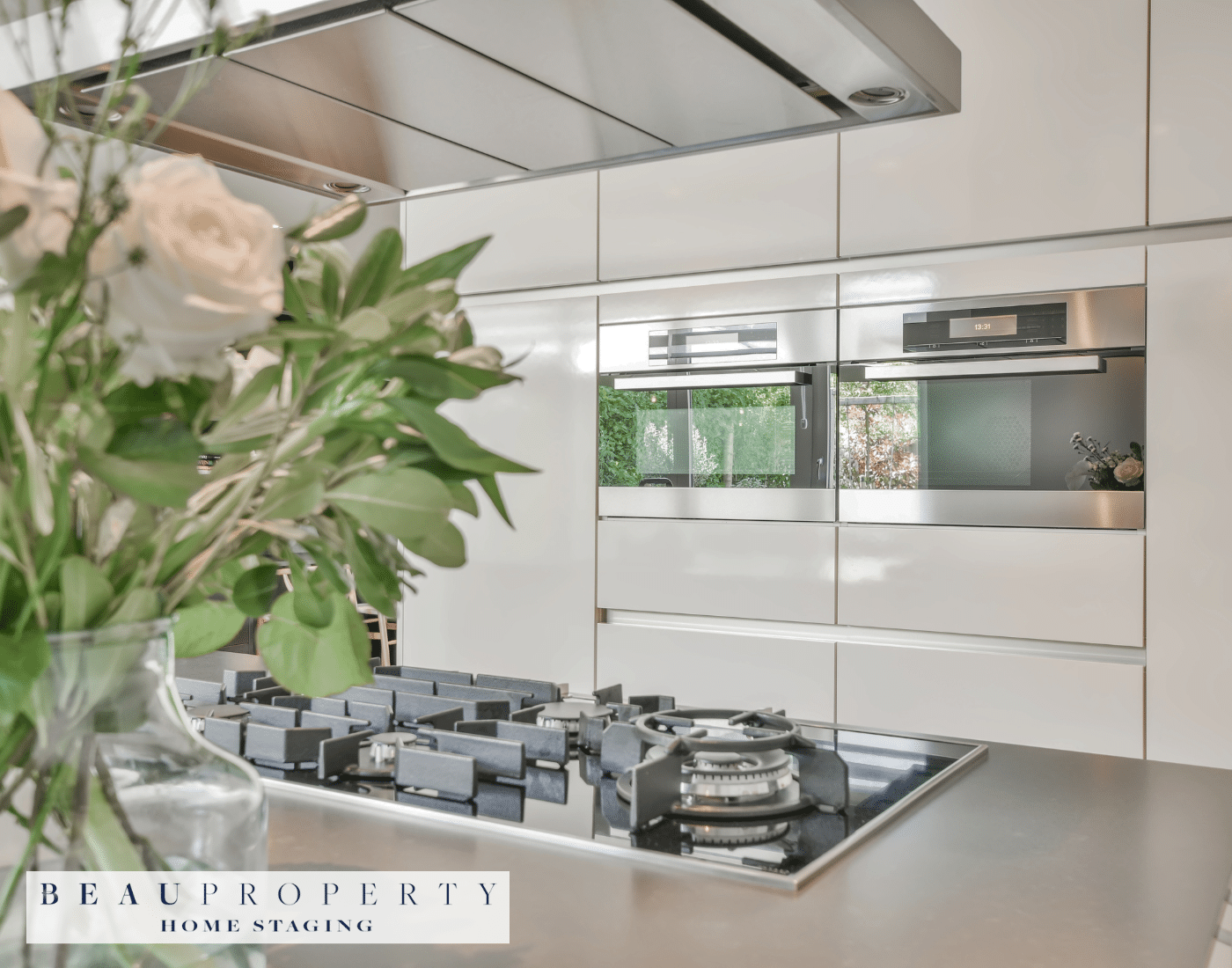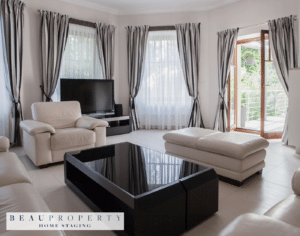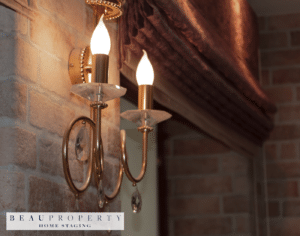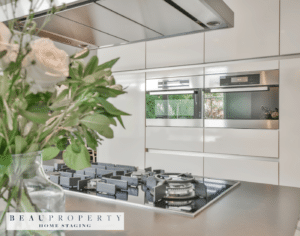Introduction
In today’s highly competitive property market, home staging has emerged as a crucial tool in the arsenal of homeowners and property developers alike. By transforming a living space into an alluring, sale-ready environment, home staging can significantly influence a buyer’s perception of a property. Whether you’re preparing to sell your home or simply looking to enhance your living space for your own enjoyment, the principles of home staging can be applied to create a more functional and aesthetically pleasing environment.
A well-staged home not only appeals to potential buyers but can also increase the perceived value of the property. Staging helps to highlight the best features of a home, making it easier for buyers to envision themselves living in the space. In this comprehensive guide, we will explore 7 proven techniques to help you stage your home effectively. These strategies are designed to maximise the appeal of your property, whether you’re aiming to sell quickly or simply want to create a more comfortable and inviting living space.
1. Start with a Clean Slate: Declutter and Depersonalise
The foundation of any successful home staging project begins with a clean slate. Decluttering and depersonalising your space are essential first steps that set the stage for everything that follows. Cluttered spaces can feel cramped and disorganised, which is a turn-off for potential buyers. Personal items, while meaningful to you, can hinder a buyer’s ability to imagine themselves living in the space.
Decluttering Tips:
-
Sort and Store: Begin by going through your belongings and categorising them into three groups: keep, donate, and discard. Items that you want to keep but don’t need immediately should be stored away, either in a storage unit or neatly packed in a garage or attic.
-
Tidy Up: Ensure that all surfaces, including countertops, tables, and shelves, are free from excess items. Minimalism is key here; the less cluttered a space appears, the more spacious and inviting it will feel.
-
Organise Storage Spaces: Potential buyers are likely to inspect storage areas such as closets, cupboards, and pantries. Make sure these spaces are well-organised and not overflowing with items. This creates the impression of ample storage, which is a significant selling point.
Depersonalising Tips:
-
Neutral Décor: Replace personal or bold décor with more neutral items. For instance, swap out family photos for simple artwork or mirrors. This allows potential buyers to imagine their own décor and personal touches in the space.
-
Remove Personal Items: Store away personal items such as toiletries, personal mail, and laundry. The goal is to create a space that feels like a blank canvas, ready to be personalised by the next owner or to be enjoyed as a serene, uncluttered environment.
By starting with a clean, depersonalised space, you allow potential buyers to focus on the home itself rather than the items within it. If you’re unsure where to begin, Beau Property Staging offers expert advice on how to effectively declutter and depersonalise your home as part of their comprehensive home staging services.
2. Maximise Space: Furniture Arrangement and Flow
One of the primary objectives of home staging is to make your living space appear as spacious and functional as possible. This can be achieved through strategic furniture arrangement and ensuring a good flow throughout the space. The way furniture is arranged can significantly impact how a room is perceived, affecting both its flow and its functionality.
Furniture Arrangement Tips:
-
Focus on Functionality: Arrange furniture in a way that highlights the purpose of each room. For example, in a living room, ensure that seating is arranged to encourage conversation and that there is a clear focal point, such as a fireplace or a television.
-
Create Clear Pathways: Avoid overcrowding rooms with too much furniture. Instead, focus on creating clear pathways that allow easy movement from one area to another. This not only makes the space feel larger but also more inviting.
-
Use the Right Size Furniture: It’s important to ensure that your furniture is proportionate to the size of the room. Large, bulky furniture can make a small room feel cramped, while small furniture in a large room can make the space feel empty and uninviting.
Flow Tips:
-
Open Up the Space: Where possible, create a sense of openness by removing unnecessary furniture or repositioning items to create a more open layout. This can involve something as simple as moving a sofa away from a wall or removing an extra chair that makes the room feel cluttered.
-
Define Zones: In larger, open-plan spaces, use furniture to define different zones, such as a dining area, a lounging area, or a workspace. This helps to create a sense of purpose for each area, making the space feel more organised and functional.
To see examples of how furniture arrangement and flow can transform a living space, take a look at the show home videos created by Beau Property Staging. These videos provide a visual guide to effective staging techniques.
3. Light It Up: Importance of Lighting in Home Staging
Lighting is one of the most critical yet often overlooked elements of home staging. Proper lighting can transform a space, making it feel brighter, more inviting, and more spacious. Poor lighting, on the other hand, can make even the most beautifully staged home feel dull and unwelcoming.
Natural Light Tips:
-
Maximise Natural Light: Natural light is a valuable asset in any home. To make the most of it, open up curtains and blinds to let in as much light as possible. Clean windows thoroughly to ensure they are free from dirt and streaks, which can obstruct light.
-
Use Mirrors: Mirrors are a great way to enhance natural light in a room. Place mirrors opposite windows or in areas where they can reflect light into darker corners of the room. This not only brightens the space but also makes it feel larger.
Artificial Lighting Tips:
-
Layered Lighting: To create a well-lit and inviting space, use a combination of ambient, task, and accent lighting. Ambient lighting provides overall illumination, task lighting focuses on specific areas (such as reading nooks or kitchen countertops), and accent lighting highlights particular features or décor.
-
Update Light Fixtures: Consider updating outdated light fixtures with more modern options. This can instantly refresh a room and add a touch of style. Choose fixtures that complement the overall décor of the room while providing adequate light.
Proper lighting can dramatically alter the atmosphere of a room, making it more appealing to potential buyers. For inspiration on how lighting can enhance a living space, explore the portfolio of Beau Property Staging, showcasing beautifully lit and expertly staged homes.
4. Use Colour Wisely: Neutral Tones and Accents
Colour plays a significant role in how a space is perceived. When staging your home, it’s important to choose colours that appeal to a wide range of tastes while also adding warmth and character to the space. The right colour scheme can make a room feel larger, more inviting, and more cohesive.
Neutral Tones Tips:
-
Opt for Neutral Colours: Neutral colours such as whites, greys, and beiges are universally appealing and create a calm, inviting atmosphere. They serve as a blank canvas that allows potential buyers to imagine their own style and décor in the space.
-
Fresh Paint: If your walls are currently painted in bold or dark colours, consider repainting them in a neutral tone. This can make the space feel larger, brighter, and more cohesive, which is particularly important in smaller rooms or those with limited natural light.
Accent Colours Tips:
-
Add Pops of Colour: While neutral tones should dominate, you can add pops of colour through accessories such as cushions, throws, and artwork. These accents add interest and personality to the space without overwhelming it.
-
Match with Furniture: Ensure that your accent colours complement the furniture and overall décor of the room. This creates a harmonious and visually pleasing environment that is both stylish and inviting.
The use of colour is a subtle yet powerful aspect of home staging. For professional assistance in selecting the perfect colour palette and integrating it seamlessly into your staging efforts, consider consulting with the experts at Beau Property.
5. Highlight Key Features: Make the Most of Your Home’s Best Assets
Every home has unique features that set it apart. When staging your home, it’s essential to highlight these key features to ensure they stand out to potential buyers. By showcasing the best aspects of your property, you can create a memorable impression that distinguishes your home from others on the market.
Key Feature Tips:
-
Showcase Architectural Features: If your home has architectural features such as a fireplace, exposed beams, or large windows, make sure these are the focal points of the room. Arrange furniture and décor to draw attention to these elements, making them the star of the space.
-
Use Décor to Enhance Features: Use strategic décor to enhance key features. For example, place a stylish mirror above a fireplace to draw the eye, or install a statement light fixture in a room with high ceilings to emphasise the space’s verticality.
-
Don’t Hide Features: Avoid placing furniture or décor in a way that obstructs key features. For example, don’t place large furniture in front of windows or block views with bulky items. Instead, arrange your space to highlight these features and make them accessible and visible.
Highlighting your home’s best assets can make a lasting impression on potential buyers and set your property apart from the competition. If you need help identifying and showcasing your home’s key features, the team at Beau Property can provide expert guidance and support.
6. Stage for Your Target Market: Know Your Audience
Understanding your target market is crucial when staging your home. Different demographics have different tastes and priorities, so it’s important to stage your home in a way that appeals to your specific audience. This targeted approach can significantly increase the effectiveness of your staging efforts.
Target Market Tips:
-
Research Your Market: Start by considering the typical buyer for your property. Are they likely to be families, young professionals, or retirees? Understanding your audience will help you tailor your staging to their preferences and lifestyle needs.
-
Stage Accordingly: Once you have identified your target market, stage your home to meet their needs and expectations. For example, if your target market is young families, consider creating a child-friendly environment with a play area or a family dining space. If you’re targeting young professionals, focus on creating a stylish, modern space with a home office or a well-designed living area.
-
Highlight Relevant Features: Emphasise features that are likely to appeal to your target market. For example, if you’re targeting retirees, highlight the easy accessibility of the home, the low-maintenance outdoor space, and any single-level living areas.
By staging your home with your target market in mind, you can create a space that resonates with potential buyers, making it more likely that they will see your home as the perfect fit for their needs. For assistance in staging your home for your specific market, consider reaching out to Beau Property, where the team can help you identify your ideal buyer and tailor your staging accordingly.
7. Add the Finishing Touches: Details Matter
The final step in the home staging process is to add the finishing touches. These small details can make a big difference in how your home is perceived. The right finishing touches can create a polished, cohesive look that leaves a lasting impression on potential buyers.
Finishing Touches Tips:
-
Use Fresh Flowers: Fresh flowers add a touch of elegance and warmth to any room. Place vases of flowers in key areas such as the living room, dining table, and entrance hall. Choose flowers that complement the colour scheme of the room for a cohesive look.
-
Set the Scene: Create a welcoming atmosphere by setting the dining table, arranging cushions on the sofa, and placing a throw over a chair. These small touches make the space feel lived-in and inviting, helping potential buyers to envision themselves in the home.
-
Appeal to the Senses: Consider how your home appeals to all the senses. Use scented candles or diffusers to create a pleasant aroma, and play soft background music to create a relaxing, serene environment during viewings. These sensory elements can create a more memorable experience for potential buyers.
The finishing touches are what tie everything together and create a cohesive, polished look that will leave a lasting impression on potential buyers. For inspiration on how to add the perfect finishing touches to your space, explore the portfolio of Beau Property Staging, where you can see examples of expertly staged homes.
Conclusion
Staging your home is a powerful way to transform your living space into an inviting, attractive environment that appeals to potential buyers. By following these 7 proven techniques, you can maximise the appeal of your home, whether you’re preparing to sell or simply want to enhance your living space.
From decluttering and optimising furniture arrangement to choosing the right colours and highlighting key features, each step plays a crucial role in the overall impact of your staging efforts. By understanding your target market and adding the perfect finishing touches, you can create a space that not only looks beautiful but also feels like home to anyone who walks through the door.
If you’re serious about staging your home for maximum impact, partnering with an experienced team like Beau Property Staging can provide the expertise and tools you need to achieve stunning results. Whether you’re staging a show home, a new build, or your own property, professional staging can make all the difference in achieving a faster sale at a higher value.
For more tips and resources on home staging, be sure to check out the comprehensive guides available from leading UK property websites such as:
-
Rightmove
-
Zoopla
-
House Beautiful






